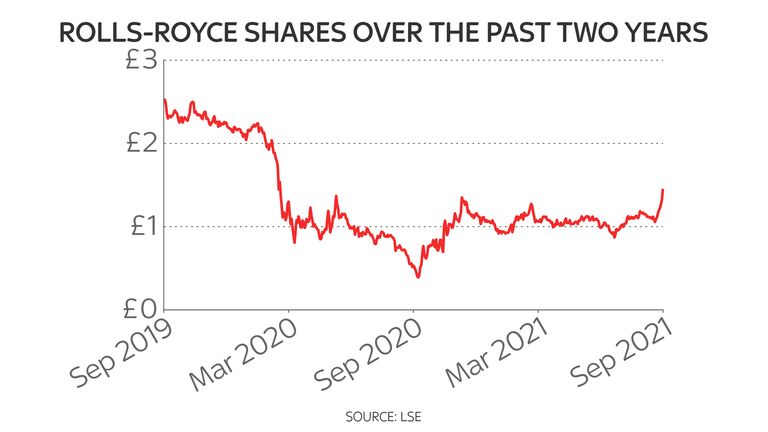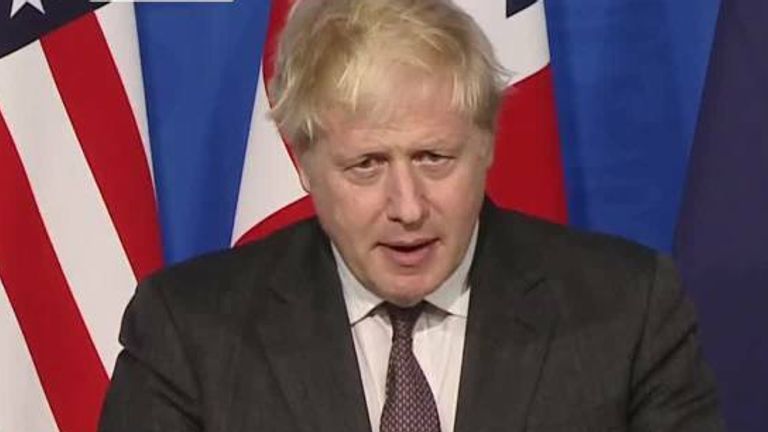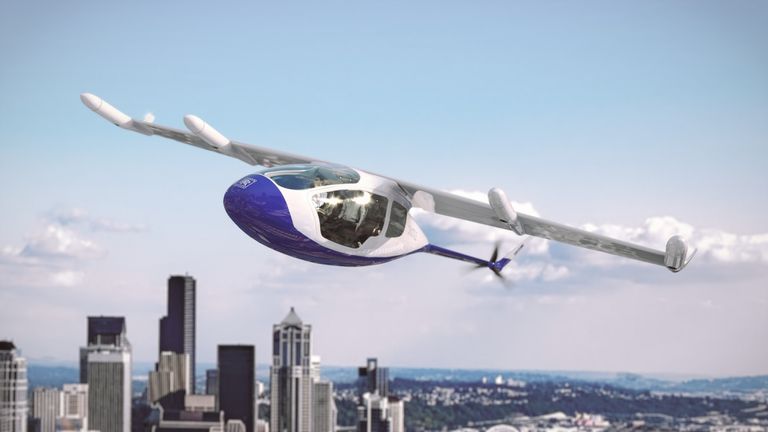COVID-19: What is powering a post-pandemic recovery at Rolls-Royce?
Few in the battalions of big business in Britain endured a tougher pandemic than Rolls-Royce.
Around half of the aircraft engine maker’s revenues come from civil aviation and these in turn depend in no small part on the number of hours that its engines are actually in the air. Flying hours account, in total, for roughly a quarter of total revenues.
So the grounding of most of the world’s commercial airlines was a severe blow and tipped Rolls into the red.
With its full year sales falling by almost 29%, to £11.8bn, Rolls reported a full year pre-tax loss of £2.9bn for 2020 as a whole. Its share price fell by 53% of their value, making Rolls the worst-performing stock of 2020 in the FTSE 100 behind only International Airlines Group, the owner of British Airways and Aer Lingus.
The company was forced to announce 9,000 job cuts, a third of them going in the UK, from a pre-pandemic global workforce of 52,000. And a rescue refinancing, which involved raising £3bn in debt and a further £2bn from a share issue, was also not executed as well as it could have been.
Rolls said in July last year that it was reviewing potential options to strengthen its balance sheet, telegraphing well in advance that it would need to raise funds from a share issue, giving speculators ample opportunity to drive down the share price before it eventually tapped the market three months later. More decisive action might have enabled the company to raise the money at a more advantageous price.
All that, though, is in the rear view mirror.
Recent news has suggested that, just maybe, the engineering giant is enjoying a change of fortune.
The latest news came on Monday when the US Air Force awarded Rolls a $2.6bn (£1.9bn) contract to replace the engines on its Boeing B-52H Stratofortress bomber fleet.
It means the bombers will be powered for the next 30 years by F-130 engines supplied by Rolls, which has delivered thousands of engines to the US Air Force for more than 70 years.
Rolls said the engines, which will be built at its facility in Indianapolis, will provide vastly greater fuel efficiency, increased range and reduced tanker aircraft requirements.
The company reportedly beat off three rivals to secure the contract, under which it will produce at least 608 engines at the site, creating 150 new high-tech, high-skilled jobs.
Listen and subscribe to The Ian King Business Podcast here
Tom Bell, chairman and chief executive at Rolls-Royce North America, said: “We are proud to join a truly iconic US Air Force programme and provide world-class, American-made engines that will power its missions for the next 30 years.
“The F130 is a proven, efficient, modern engine that is the perfect fit for the B-52.”
News of the contract sent Rolls shares up by almost 10% at one point.
Sector analyst Christophe Menard, of Deutsche Bank, told clients: “It is a key win for Rolls-Royce because Pratt & Whitney was seen as the potential favourite, having already re-engined the B-52… in the 1960s.
“Rolls-Royce was competing with Pratt and GE and their respective PW800 and Passport engines were more recent.”
News of the contract win comes less than a fortnight after US President Joe Biden, UK Prime Minister Boris Johnson and his Australian counterpart Scott Morrison announced a new defence pact, AUKUS, that will see Britain and the US sharing technology with Australia to produce nuclear-powered submarines for the latter.
Rolls, whose pressurised water reactors have powered every nuclear submarine produced for the Royal Navy, is expected to be a beneficiary of the pact.
The company is also eyeing further opportunities created from the current energy crisis. The recent surge in wholesale energy prices has brought home the need for more back-up generating capacity. Britain’s power grid is transitioning towards being net zero carbon and renewables are expected to provide the bulk of this power.
At present, when the wind does not blow and the sun does not shine, gas has been expected to pick up the slack. In future, only nuclear power will have the capacity to provide that ‘always on’ back-up while being net zero, but ministers are keen to examine lower-cost alternatives to expensive new plants like the new Hinkley Point ‘C’ plant being constructed in Somerset. A lot of interest is being shown in small modular reactors of the sort Rolls is developing.
Paul Stein, the chief technology officer at Rolls, has already said publicly that one such reactor would be able to power a city the size of Leeds. He has suggested that the first of these could be connected to the grid by 2030 – with as many as 16 being installed at existing and former nuclear sites. The Financial Times reported in May this year that the first five such reactors would cost £2.2bn each, falling to £1.8bn for subsequent units, representing a huge potential order book for Rolls.
That is not the only investment in new technology that the company hopes will bring benefits. Rolls is currently developing a single seat electric aircraft that it hopes will shortly break the air speed record for an all-electric aircraft, while it is also a partner and technology provider to Vertical Aerospace, which hopes to be producing and selling all-electric flying taxis by the end of the decade. It is also partnering Wideroe, a Norwegian regional airline, with a view to developing all-electric passenger aircraft.
Meanwhile, as well as trying to bring in new orders, Rolls has also been making progress in restoring order to its balance sheet.
The company recently sold its stake in Air Tanker, the company that owns the RAF’s fleet of refuelling planes, for £189m and, later on Monday, was expected to clinch the £1.5bn sale of its Spanish subsidiary ITP Aero.
All this encouraging news must be tempered with the fact that Rolls has no presence in building engines for narrow-bodied aircraft, the fastest-growing part of the commercial jet market, a decision made almost a decade ago and that continues to dog sentiment towards the company among investors.
Nonetheless, after an awful 18 months, it feels as if things may finally be going Rolls’s way.
As the aerospace and defence team at the investment bank Investec told clients on Monday: “Shares gained last week as news of easing US travel restrictions lifted near-term prospects for Civil Aero widebody cashflows.
“A supportive outlook in defence, a successful sale of ITP, and renewed interest in nuclear capabilities may provide further momentum.”
Those shareholders who held their nerve and subscribed for new shares in the cash call a year ago, though, have done well. They were given the right to buy new shares at the discounted price of 32p each. The theoretical ex-rights price of the shares – the price of the shares once the fund-raising has been completed – was just 54.6p.
Today, after a sharp rally in the share price, those shares were changing hands at 146.6p at one point. That remains around 43% down on the price going into the pandemic.
It is, though, a post-pandemic high.
For all the latest business News Click Here





